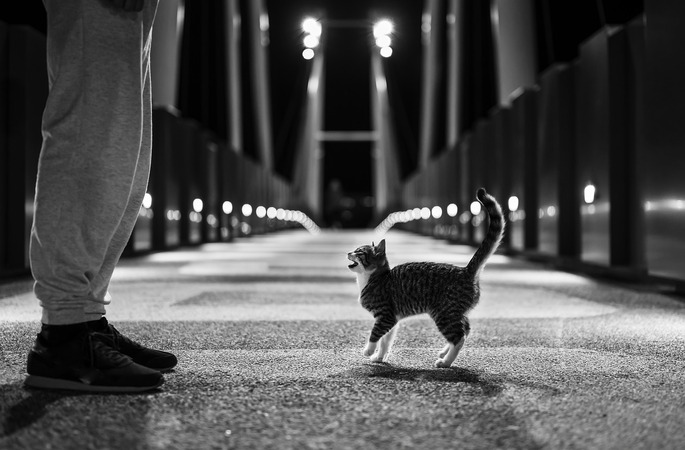I began commuting to the city for the first time in my working life in 2016. I would get off the bus in the city and see a man sitting on a street corner, then another person up the road and a woman outside the magnificent Queen Victoria building. I was shocked that in a country as wealthy as Australia, there would be any need for people to be sitting, sleeping, or begging on the street.
Before travelling to the city, I lived in a home ‘bubble’ and drove to my work ‘bubble’, never seeing the reality of what people doing it tough were facing.
Driven by curiosity and outrage at the injustice of it all, I would initially say hello to the people I met on the street. Over time, I would ask if they needed anything, such as a drink or a meal. As I built a rapport with people, I would ask how they were, eventually being invited to sit with them and have a conversation.
The stories that people ‘on the street’ shared with me opened my eyes to the fact that often an event happened in people’s lives that led them to experience homelessness.
Stuart’s story
I met Stuart in 2017. He is a lovely, gentleman. Stuart had lived on the Northern Beaches of Sydney – just like me. He told me proudly that he’d had a good contract job, a big house, two cars, a wife, and three children. Stuart had a workplace accident which required a lengthy recovery period, and he couldn’t earn an income during this time. He became depressed, and his marriage broke up. Stuart moved out to enable his wife and children to stay in the house. He quickly learned there is very little affordable housing for someone on a disability pension. After using up his savings to stay in cheap motels and temporary accommodation, Stuart found himself without any form of housing for the first time in his life.
Severe lack of housing
The sad reality for people in Stuart’s situation is that there simply isn’t enough social and affordable housing for people on low incomes. There are not enough places for domestic violence survivors. There is not enough suitable accommodation for young people living with a disability, so they are placed in aged care facilities. It is dire.
Governments at various levels have been systemically selling off social housing for urban development. The rate at which they are building new properties is not keeping pace with the need. NGOs are left to fill the gap. Across Australia, over 116,000 people experience homelessness1. The waitlist to go into social (Government-subsidised) housing is up to ten years2.
Causes of homelessness
A common expression says we are all three decisions away from homelessness – you could lose a job, go through a relationship breakdown, be rejected by your family, become overcommitted financially, experience incarceration, or develop a disability. There are many reasons which make it so important not to judge another person’s situation – because you never know what they’ve gone through.
A major cause of youth and adult homelessness is childhood trauma. At an organisation I worked at, they estimated that 90% of the people attending the service had some form of childhood trauma. I learnt that many people have a truly tough start in their lives, and breaking the cycle of intergenerational poverty, family violence, and harm from substance use, is very challenging.
Lana’s story
Lana* grew up in a wealthy home and went to a private school. She was an academic and sporting high achiever, reaching the national level in her sport. However, no one outside of the family knew that her corporate lawyer father was a violent alcoholic, taking his rages out on his children. Lana’s coping method was to restrict her diet and then resort to self-harm. She waited to complete her final year of school and then left home. The impact of her family life triggered mental health issues, and she spent time in a psychiatric unit. Lana spent the next two years couch surfing’3, spending a couple of days or a few weeks at friends’ homes. When she developed suicide ideation for the second time, the hospital would not release her until she had stable housing. Lana had to call around to seek support from youth services and was finally assisted in moving into her own unit. Lana is turning 22 this year, and is studying and working part-time. She wants to share her story hoping that she can help other young people going through difficult situations.
Scenarios like this are happening everywhere. I know a beautiful man, John*, whose life story mirrors Lana’s – the difference is that John has been dealing with his trauma for sixty years.
Myths around homelessness
The charity Mission Australia has some important information to dispel some myths around homelessness4. One of the statistics I highlight is that only 7% of people experiencing homelessness are visible, living rough on the streets. The other 93% includes people sleeping in their cars, couch surfing, living in overcrowded dwellings, caravans or living off-grid in a bush tent.
Another shocking statistic is the rapid rate of older women experiencing homelessness. Women aged 55 and over were identified as the fastest-growing cohort of homeless Australians between 2011 and 2016, increasing by 31%5. In August 2020, research revealed that 400,000 women over the age of 45 are at risk of homelessness6. The study showed that older women who do not own homes, work part-time or in casual employment, have limited wealth and savings, and rely on the private rental market, are at considerable risk of housing affordability stress. If they are a single parent, their risk increases by 65%.
Language matters
One crucial thing I have learned from working in this space is to avoid stigmatising language.
The language we need to use has to be person-centred: for example, to describe someone as ‘ a person experiencing homelessness’ , rather than say ‘a homeless person’.
In the same way that we would say a person living with a disability, rather than a disabled person. People are human beings first and foremost. There are other important language definitions around alcohol and drug use, sexuality, gender identification, health conditions and pronouns. I encourage you to learn more about person-centred language.
Andrew’s story
Someone who I am proud to call a friend is Andrew. He grew up in the country in the 1980s, knowing he was gay. His Dad did not accept Andrew’s sexuality, but his Mum was his biggest defender and strongest ally. When his mother died, Andrew was bereft. He packed a bag and headed for the one place he thought he would be accepted, Oxford Street Sydney. As a 21-year-old country boy, he arrived at Central Station and discovered it was not a safe space. After years of living in refuges and boarding houses, sleeping in parks, doing sex work to earn money, and developing a heroin habit to block out the sex work, Andrew contracted HIV and almost died. Thankfully he didn’t. Andrew and his Dad reconciled and now have a great relationship. He works for an NGO taking groups on urban walks and sharing his story.
The importance of Non-Government Organizations (NGOs)
Many charities and other NGOs play an important role in the lives of people experiencing homelessness. The motto of a service is ‘to create a lounge room for people without a lounge room’.
These essential services provide food, clothing, training, activities, free legal advice, medical checks, and social support. They help foster a sense of community. I often hear people making arrangements to ‘meet at Wayside’, an NGO that provides a drop-in centre for the homeless.
These services provide a place where people who are isolated or experiencing homelessness can feel accepted and acknowledged – without judgement.
Connection is vital for all of us, even more so if you live on the margins of society.
What can I do?
Homelessness is a difficult topic. It’s one that we may not experience first-hand, but we will either witness it or know someone who has been affected.
The most impactful thing you can do is to smile at a person sitting on the street. Acknowledge their humanity. Many friends tell me that the worst thing about experiencing homelessness is becoming invisible. That people walk right past you. Some other suggestions are :
Ask someone if they need anything and buy it for them.
Give cash to people on the street. This is called dignity of choice. It’s not your or my place to judge what they spend the money on. If you choose to give cash, give it unconditionally.
Support Big Issue Magazine (Australia) vendors.
Volunteer at a service that supports people experiencing homelessness. You’ll be surprised to learn that you receive more than you give.
If you have the financial capacity, donate to a charity or cause you believe in. And please just give the money. NGOs are run by skilled people who do this work every day. They shouldn’t have to jump through hoops or complete applications to get funding to keep operating.
“It’s the deep relationships with diverse people that allow us to become compassionate. It’s difference that forges community. Despite our differences, we’re essentially the same and share a need for true, consistent connection.” – Jayden Battey7
1 – figure based on the 2016 ABS Census, the most recent official record as the 2021 Census figures have not yet been released 2 – Department of Communities & Justice (previously called FACS) estimated waitlist. You can look in your own area in Sydney to find the estimated waiting period at https://www.facs.nsw.gov.au/housing/help/applying-assistance/expected-waiting-times 3 – Couch surfing is viewed as secondary homelessness in the cultural definition by Mackenzie and Chamberlin because it is a temporary shelter. You can view the definitions here - https://homelessnessaustralia.org.au/about-homelessness/ 4 – Mission Australia 7 Myths about homelessness in Australia - https://www.missionaustralia.com.au/stories/safe-homes/7-myths-homelessness 5 – Human Rights Australia - https://humanrights.gov.au/our-work/age-discrimination/projects/risk-homelessness-older-women 6 - https://www.oldertenants.org.au/content/400000-women-over-45-are-risk-homelessness-australia 7 – This is a must read! https://www.abc.net.au/news/2022-01-30/5050-project-the-power-of-connection-publish-15-january/100739580



